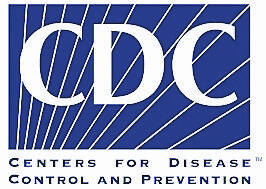ATLANTA — The Office of Rural Health at the Centers for Disease Control and Prevention unveiled a new strategic plan last week aimed at combating health issues in rural areas across the country.
The new plan, which was developed alongside local partners like the N.C. Office of Rural Health, outlines a vision for the next five years to combat health issues like obesity, chronic illnesses and substance misuse. Many people who live in North Carolina’s Border Belt region struggle with those issues and more.
“We really wanted the strategic plan to actually be strategic, but also be actionable,” Dr. Diane Hall, the director of the CDC’s Office of Rural Health said in an interview. “But more than that, we wanted it to be relevant to the lives of people that live in rural communities.”
The Office of Rural Health opened last year after CDC officials recognized a need for dedicated attention on rural communities. The strategic plan is the first of its kind for the office which has a yearly budget of roughly $5 million.
Rural communities across the country have long been disproportionately affected by chronic health conditions. Populations in rural areas tend to skew older and have higher rates of obesity, high blood pressure and cigarette smoking. Bladen, Columbus, Robeson and Scotland counties all ranked among the most unhealthy counties in the state this year in the annual County Health Rankings compiled by the University of Wisconsin Population Health Institute.
Access to care can be difficult in rural areas. The United States has a shortage of physicians, and the squeeze is especially felt in rural communities which struggle to attract doctors with competitive salaries and updated facilities. The lack of doctors means that many living in rural areas can’t access the preventative care they need.
“We don’t have as many providers as we need, and we know that early screenings are absolutely critical for good health,” Hall said.
The CDC’s strategic plan outlines four main priorities: engaging with community health partners, strengthening rural public health infrastructure, advancing rural public health science and improving rural public health preparedness and response capacity.
“CDC is committed to advancing rural public health across America by identifying and addressing gaps in the evidence base, data analytic capabilities, and the workforce in rural communities,” the plan says.
The strategic plan is broad, but CDC leaders will work alongside subject matter experts and local partners over the coming months to develop a more specific action plan. Those in the Office of Rural Health will also work alongside the rest of the agency to consult on how to best serve rural areas.
“What my office brings is that understanding of the rural context, and so our mission is to work with the rest of the agency to help our experts better understand that rural context,” Hall said.
Hall said that the new plan is evidence of the CDC’s commitment to invest in rural communities that have been historically underserved.
“A lot of times, rural communities haven’t really been served well by government policies or decisions,” she said. “All of that needs to be addressed when we’re talking about health decisions.”

